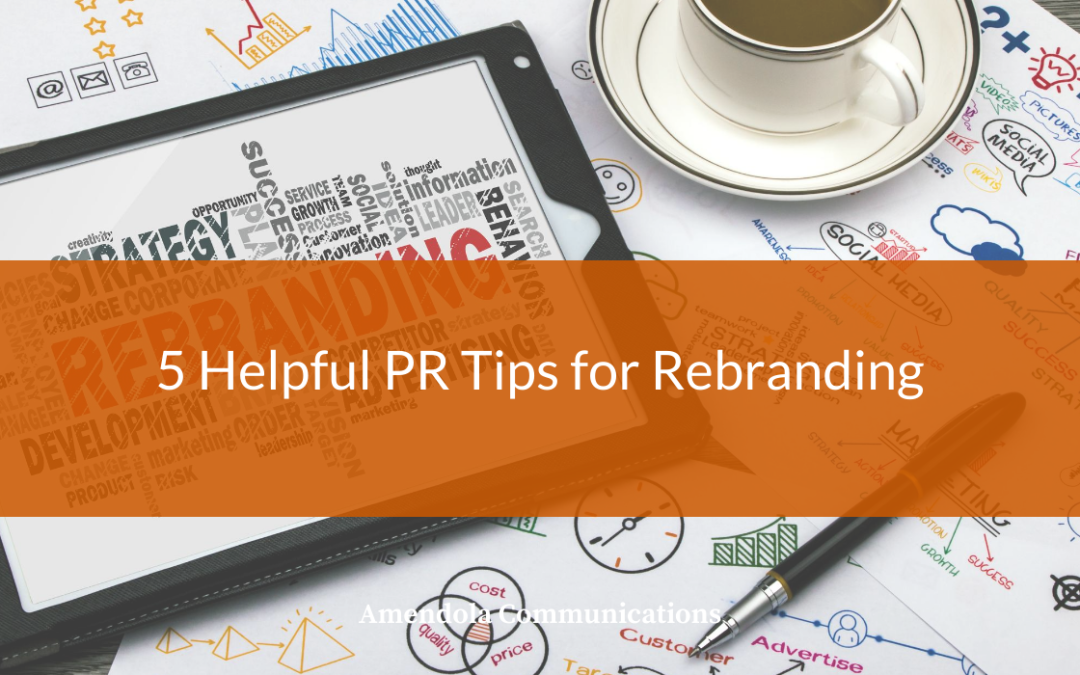by Jodi Amendola | Apr 28, 2021 | Blog
As many readers of the Amendola blog are probably aware, I lost my mother, who was my inspiration and guiding light, to COVID-19 the night before Thanksgiving last year. It was difficult for my family as well as me, especially because I believe it was unnecessary.
She should have been there to celebrate the holidays with us and would have been in my opinion had it not been for some missteps in her care.
As part of my process of dealing with this unexpected loss, I wrote a story about her that appeared in the Arizona Republic. If you’d like to know more about the details, along with my thoughts about what you should do to advocate for your loved ones should they be in the same unfortunate circumstances, it’s all contained in that article.
It’s what happened next, however, that I want to address today.
Shortly after that article appeared (and was re-posted on Facebook), I began to receive the most touching and beautiful comments, messages, and emails. And I’m still receiving them.
Some were from friends, of course, expressing their sympathy for my loss. Many, however, were from strangers who had gone through a similar experience and found a sense of kinship in sharing their grief as I had shared mine.
It was a stark reminder of a basic principle we, as marketing and PR professionals, should keep in mind: PR in general, and thought leadership in particular, works better when you make it personal. A topic, incidentally, I also explored in my latest Forbes Agency Council article.
The most effective thought leadership comes when the person behind it is passionate about the subject matter. Yes, you can write in a detached away about something technical, conveying information and/or data that is worth sharing. But while it informs, it usually doesn’t move people to action.
For that you need a human element. And nothing is more human than sharing something personal.
It can be a story from your childhood, your teen years, or your time as an adult. It can be about something funny that happened to you, or something sad, or something that contains a mix of emotions you can’t even sort out yourself.
Or it can be about a person who means a lot to you. Like my mom did to me.
The important thing is that it is a little glimpse behind the façade we all tend to put up in our business encounters to cover our true selves. In other words, it’s real.
Organizations often talk about creating an emotional connection to their brand during branding meetings. But then they’ll do everything they can to hide anything that seems remotely raw or real.
To me, that approach makes no sense. Sure, you don’t want to air all of the organization’s dirty laundry in your marketing and PR efforts. But what’s wrong with showing your human side?
The point is a person or a company can be open and honest about their feelings and reactions to events without falling into the rabbit hole of controversy. The key is to focus on the parts that are universal to the human experience.
We all experience joy and caring. We all experience excitement and wonderment at one time or another. We all experience grief and loss.
That doesn’t mean we experience it in the same way. But we do share those experiences to some degree.
The more willing organizations are to take a stand and tell stories about themselves, their employees, their customers, and everyone else who is connected to them, the more “real” they will become in the minds of their key audiences. And the more successful they will be in creating a brand image that is unique and memorable.
I know it’s not always easy to tell these stories. We can all feel a little exposed when we offer these types of details about ourselves.
When I wrote about my mom it was like going through it all over again.
Yet as I see the reactions continue to come in I know I made connections with people I’ve never met, and probably never will properly meet. Isn’t that what marketing and PR are really all about?

by Grace Vinton | Aug 19, 2020 | Blog
Many healthcare technology companies are choosing to rebrand because of the impact that the novel coronavirus has had on the healthcare ecosphere. Capabilities or focus points which may not have been on the forefront before this year-long industry earthquake are now front and center. Clear company identities and market differentiators have never been more important.
When rebranding, there are 5 strategic public relations best practices that you will want to make sure you are clear on before finalizing your overall rebranding
marketing efforts and plans.
Messaging. The most common misunderstanding I have come up against when working on rebranding a company from a public relations perspective is that many communicators – even long time marketing seniors – are entirely unaware that there is a difference between marketing messaging (often, product messaging) and public relations messaging. They are sisters, not twins, folks!
Some questions that I often ask to get to the bottom of the public relations messaging rebranding efforts include: What is it that you want to convey from a
thought leadership level to the public? How does this back up your business goals and objectives and overarching communications goals and objectives?
Typically, when these questions are answered, it can be a fairly simple process to start development on a “moving” public relations messaging document that will grow and evolve as the company grows and evolves.
Audience. Do not forget to think about the people who will be impacted by your rebranding. It is important to get the message into the right hands and ears.
Who are your customers? Who are your customers’ customers? What matters to them? How are they acquiring information? Social media? A certain publication?
Being clear on the answer to these questions can help promote a strategic public relations strategy when rebranding. Showing in-depth knowledge of your
customers and customers’ customers pain points on a public scale can be impactful for building the overall credibility of your rebranded company in the
public’s eye.
Thought Leadership. What can you speak to other than your business offerings that props up the depth and breadth of your company’s position in the market?
In this vein, I often recommend that clients take time to work together to articulate which areas of the market their products impact indirectly that can be a strategic topic of reference for the company to react to on a public scale. It really helps to get specific here. Listing thought leadership topics and corresponding messages that support your company’s overarching messages can be invaluable to being ready and able to pursue high impact reputation building messages in front of the public’s eye. Be willing to tell the story of “why” the rebranding was important given the current state of the industry.
100% Buy-in across company segments. You need to make sure every sector of the company is very clear on the new messaging and branding statements. It is vitally important to get buy-in from each segment on every word and punctuation mark.
Once you do, offering each segment of a company a document or visual on how the new branding impacts how they talk about the company or how they will do their job moving forward can be helpful in getting everyone on the same page.
Buy-in needs to happen on every level from the CEO to the janitor. Each employee needs to be clear on what the company does and the best way to explain that to
whoever they need to explain it to.
Pipeline tactic development: Once you have rebranded, you also need to take good look at current tactics and pipelines to determine if they are supporting the new look and/or descriptors that you have chosen for your company.
Old communication, marketing, public relations tactics may have worked for your old way of thinking about what you did, but there may be pivots you need to take to
support the updated messaging and overall look of the company. I can’t tell you how many stories I’ve heard about rebranding where major sales documents were
not updated, yet still used, mostly due to confusion on the branding, how it effects the company, and why it matters.
Each sector of the company needs to look at the way they are doing their jobs in light of the rebranding efforts and determine if old ways of thinking need some
updating. Keep these recommendations in mind when developing your public relations strategy during a company rebranding effort. All healthcare
technology companies should take a good look at their company identity in this season.
Whether or not your company is taking on a full-on rebranding effort, it’s helpful to keep these best practices in mind.

by Margaret Kelly | May 20, 2020 | Blog
AKA #WantToUseNewHashtags!
As any public relations professional will tell you, making your story stand out from the rest of the noise is what we’re paid the big bucks to do. Press releases, bylines, blogs and case studies are the stuff of dreams.
Internally, this is how it’s done: your Amendola team is comprised of an account executive, strategist, writer, media relations specialist and, if we handle it for you, a social media manager. Everyone on your team is deeply knowledgeable about your company’s offerings.
The strategist and account executive put your company’s expert message in front of our writer who produces a piece of content. The media relations specialist pickups up the ball and gets the press release or byline in front of the right set of editors and journalists who are looking for exactly the contact you have. Once it’s published, the social media manager links the article to your various social media platforms.
Client-generated content is nuggets of gold for the social media team; however, we follow a pretty strict practice of the 80/20 rule. That means all your company’s
LinkedIn, Facebook and Twitter posts should be a mix of 20% company news and 80% third-party content to keep you focused as a thought leader on the topics
in which you excel. You want your followers to be interested in your feeds because you generate news of interest, not just commercials.
Finding that all-important third-party content for your social media posts is where the social media team earns its KUDOs.
But how do we do that when the whole world is talking about one subject?
Don’t get us wrong especially when all our clients are in the healthcare field – we have the utmost compassion for everyone suffering and working courageously during the COVID-19 pandemic. It’s impacting everyone their jobs, health, lives, and everyday routines. This is by far, the single largest collective story we’ll see in our lifetime. But my colleagues and I are struggling to keep it fresh in a one-hashtag world.
So once again, how do we find articles that help propel you as a thought leader when all media seems tuned to one channel? How do we help you stand out above the din?
Here are 5 tips to help you find ways to enhance your message.
- Research. Our team finds RSS feeds (such as Feedly) a good resource for tracking keywords created in a Google search, or to subscribe to specific outlets, which is perfect for locating articles that come at least close to your company’s subject. Additionally, we use keyword searches within Twitter to actively find articles, people with whom to engage, and conversations around hashtags normally discussed in a non-pandemic world.
- Pivot. Turn your company’s news into the world’s news. Do you have a solution that helps patients monitor their meds and stay compliant? I could find you 10 articles any other day. But now, I have an article that mentions how COVID-19 patients are getting free insulin, which keeps them compliant. Do you work with EHRs? Let’s talk about how EHRs are helping or hurting during COVID-19. Give your opinion. Ask for others to tweet or comment theirs. The idea is to keep in your lane but stay relevant.
- Sidestep. OK, so perhaps you can only make 20% of your posts about you. But you can include news about your clients or business partners. Find articles about them and thank them for doing a great job. Thank others for helping your clients. If you’re not already (and you should be!) follow your clients’ Twitter feeds. When they post something positive about a local restaurant feeding them, or a video of their clinicians dancing to relieve the stress, share it! Re-tweet with a comment like, “Thanks, @Joe, for helping our friends @Client! #FrontLineHeros.” It’s technically not your news, but it’s a way to engage with your clients, and most of all, it feels good.
- Join in. If you can’t beat em, join em. You’re not going to get out of posting COVID-19 news; why fight it? However, everyone is in the same boat as you tired of reading all the grim statistics. So, let’s give them something to smile about!
- Let us help. In these difficult times, you’ve got enough on your plate. You’re trying to run a business, keep employees on staff, and find solutions to beat this nasty thing. Why don’t you let the Social Media Team at Amendola help you lighten the load?
Remember social media is just one part of your overall messaging. When used in conjunction with the rest of your public relations offerings, it’s like adding frosting to the cake. Although, I am a little impartial. Stay safe!

by Linda Healan | Apr 1, 2020 | Blog
In the wake of HIMSS20 being cancelled, many people whose HIMSS presentations were accepted for this year’s conference are lamenting the fact that the sessions that they worked so hard to get accepted won’t be given.
Let’s face it, there is a ton of work that goes into submitting presentations for HIMSS, including the process of preparing those lengthy and detailed applications.
As a colleague described in a previous blog, “the process is not easy and takes anywhere from 12-16 hours per proposal” and “HIMSS has a less than 30%
acceptance rate.”
So, you might be asking, what do we do now? For many it feels like that opportunity is lost, but it doesn’t have to be. Here are some different ways to take the content you were going to present and still get it out there.
- Take advantage of HIMSS’ virtual conference.
- Plan your own virtual conference: You can conduct a webinar with the information you were going to present at HIMSS, with both a live virtual presentation and on-demand access after the fact.
- Use information from your HIMSS presentation to draft thought leadership articles and case studies. There are likely a ton of facts and statistics that were a part of the presentation that could be included.
- Look at other conferences for speaking opportunities later in the year or in 2021 that you can submit these completed presentations to knowing that some of the stats may need to be updated and the submissions will need to be customized for each opportunity.
The cancellation of HIMSS20 doesn’t mean that all the hard work that you put into your presentations must go to waste. The show can still go on, just a bit
differently.

by Jodi Amendola | Feb 12, 2020 | Blog
Throughout my career, whenever I have done a SWOT (strengths, weaknesses, opportunities, threats) analysis with a health IT startup one of the most common weaknesses or threats their executives offer is the small size of their organizations. They may have the greatest innovation in healthcare since the Xray, but they fear it’s going to be difficult to get cost-conscious providers or payers to implement the technology or even listen to their pitch when it comes from an organization they don’t know.
Of course, that problem isn’t limited to health IT. It’s common across most industries. Unless an organization is in that 2.5% of all companies that Geoffrey Moore classified as “innovators,” or maybe the 13.5% that are “early adopters,” most organizations are too risk-averse to try a new product or service from an unknown entity.
So what’s the solution? Stop being an unknown. That’s where a thought leadership campaign can be a difference-maker.
In my latest post for the Forbes Agency Council, I explain how thought leadership can take a small organization and, following the advice of Chinese general Sun Tzu, make it look larger than life. Here’s a quick excerpt:
“You can use this to your advantage by engaging in an organized, consistent thought leadership program that shares that knowledge and helps you get prospects and customers aligned with your way of thinking. Once they believe in what you’re saying, you can guide the conversation more effectively and negate your competitors’ bigger marketing budgets. When you do that through earned media, such as media interviews or bylined articles that are accepted for publication, rather than paying for advertising or content, your thought leadership will carry even more weight and can have a halo effect.”
The post then covers five keys to taking advantage of this strategy, including:
- Offer different types of content. This is especially important if your media universe is small. The more different types of content you can offer (articles, infographics, eBooks, etc.) the more tools you have to reach an audience.
- Know things that others don’t (or at least don’t share). No one wants to hear the same old ideas being hashed out. Most businesses are started, and products are introduced, because there is a belief that there has to be a better way to do something than what currently exists. Share those ideas with others.
- Be controversial. This is especially true these days, in the era of social media when it seems like everyone is up in arms over everything. Taking strong stands instead of playing it safe and bland generally moves you to the front of the line in the media’s eyes.
- Make the content understandable. People won’t buy what they don’t understand. Keep explanations in thought leadership pieces simple and you will have a much better chance of reaching a broader audience.
- Reduce, reuse, recycle. In a small organization it can be difficult to get enough time with the subject matter experts to constantly develop new content. But all content doesn’t have to be new. Look for ways to re-purpose content (or pieces of it) in various formats to get the best mileage out of every piece you create.
Those are the highlights. For a more in-depth explanation of these points (and a lot of other great ideas from other contributors) be sure to head over to the Forbes Agency Council blog. It will be time well spent.



